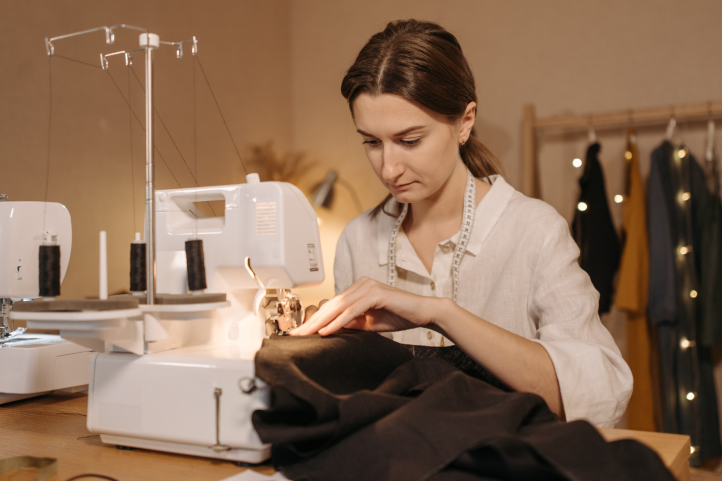
If you’re just starting out with sewing, you may find yourself easily overwhelmed with the selection of sewing tools, notions and materials at your disposal. That’s why our editors at We Like Sewing are here to break down your sewing essentials, one article at a time. Today, we’re talking all about interfacing, a sewing material that’s used to add extra support and structure to smaller parts of your garments, such as collars or waistbands. Interfacing is used when you need to give your sewing projects more stability and is available in multiple types, weaves and weights.
The good news is that commercial sewing patterns will often note when interfacing should be used and what type of interfacing will work best with the fabric you’re using and project you’re making. However, if you’re new to sewing, it’s easy to choose the wrong type of interfacing that best suits your pattern, which is why our quick guide is perfect to keep on hand before you head to the fabric store. Learn all about the different types of interfacing in our quick and handy guide.
Sew-In vs. Fusible
Interfacing is typically found in two forms, sew-in and fusible. While each has their pros and cons, it’s important to read your pattern before you purchase your fabric and other materials so that you purchase the interfacing that will work best for your project. Let’s dive into fusible vs. sew-in interfacing.
Sew-in interfacing is exactly what it sounds like: interfacing that must be sewn (either by hand or machine) into your project, meaning it takes more time to add in to your garments. Sew-in interfacing provides a more natural fall to your fabric as it’s less stiff than fusible and is ideal for more delicate fabrics that can’t be ironed (such as satin or lace) and bulky fabrics that have a lot of texture.
Fusible interfacing has a heat-activated adhesive that will bind the interfacing to your fabric with the application of an iron. Fusible interfacing is much quicker to use than its sew-in counterpart, but can create some stiffness in your finished garments. It is especially important with fusible interfacing to double-check that your fabric can withstand an iron, as you can easily scorch more delicate fabrics. Fusible interfacing is a fantastic option for beginners creating easy-level sewing projects, so that you can become comfortable with using interfacing without the time investment of sew-in.
Knit, Non-Woven and Woven Interfacing
Just as there are two different types of interfacing, there are also different weaves. The three most common weaves are woven, non-woven and knit. Woven interfacing is a weave that feels the most like typical woven fabric, meaning it can create a seamless drape to garments when used. It is on the thicker side, so it can add bulk to garments and like woven fabric, it also has a grainline, meaning you will need to pay attention when cutting.
Non-woven interfacing has no grain, as it is made by bonding fibers together and can be cut in any direction. Non-woven interfacing is excellent for many different types of sewing projects and is quite thin, so it’s a great option for adding stability without creating additional bulk. Knit interfacing is specifically designed to be used with knit or other stretch fabrics and is less stiff than the other forms of interfacing, so that it provides some stability while allowing stretch fabrics to resist losing their shape.
In addition to the three common weaves of interfacing, it is important to note that interfacing is available in different weights (such as light to heavy) as well. You should try to match the weight of interfacing to your fabric as close as possible, so that the drape of your fabric is affected less and creates a natural look.
Next Stop: Your Fabric Store
We hope our quick guide to interfacing will help you feel more confident as you tackle more challenging projects and expand your sewing skillset. Before you start, a few handy tips:
- Always read your pattern instructions. As stated earlier, your sewing pattern should list the type of interfacing required for your project.
- Test out your interfacing before starting your project. Attach your interfacing to a piece of scrap fabric so that you can investigate how your interfacing will drape on your finished garment.
- Check the color of your interfacing against your fabric before sewing. Interfacing is typically available in dark/black and white/cream, so it’s important to make sure your interfacing won’t show through your fabrics.
